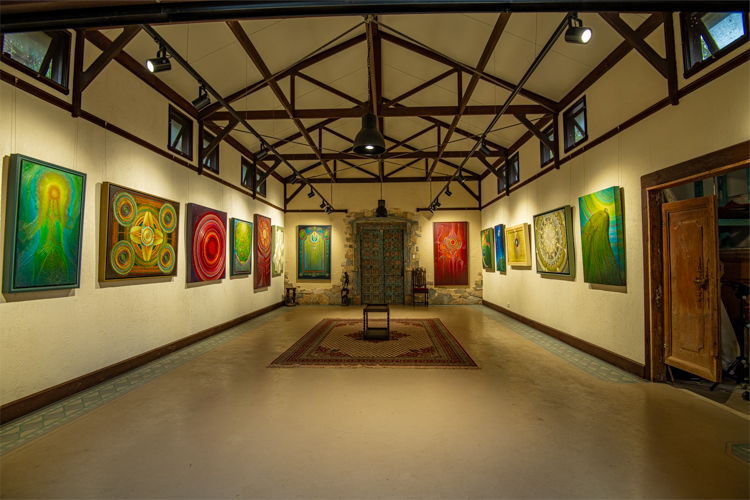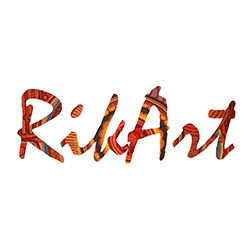Artist Rik Davidson has been painting for over 43 years and is based in Queensland, Australia.
His faceted contemporary artworks can be seen at Woolloongabba Art Gallery in Brisbane. High quality art prints are also available.
Art Critique
This text emerges from an intriguing request – to view new paintings and write about work by an artist who had kept his work so secret that, for some fifteen years. His name was kept under wraps until the day we met. New paintings, launched not in the traditional way at a gallery but in a very 21st century way, via social media and on the internet, are produced in Australia but for a global audience.
The secrecy may now be irrelevant, but it tells us something about the determination of artist Rik Davidson to develop an innovative style that required years of experimentation before being ready to unveil the results. The inspiration for his new work came from the possibility of stylistic change revealed to him by the trajectory of Picasso’s career, but also the indigenous art revolution in Australia over the last 40 years. He was driven to break through the confines of his own practice to discover a new technique and means of expressing ideas and concepts. (Davidson had painted for decades in an accessible style and this work was shown, largely, at decorative galleries).
Davidson describes himself as a traditionalist and a romantic. There is indeed a Gothic flair in the formality of his new images, constructed with carved, cut and twisted application of paint rather than brushed. Many evoke stained glass windows in their crystallation of strong light and depth of colour.
Motifs in these abstract optical puzzles include carved concentric circles that form an assymetrical vortex, ornate egg shapes as part of an elaborate painted frame within which a veil of paint masks a halo, rosettes, spirals, elipses and parallel lines. Intensity of colour is built up with layering, and variations within the threads of paint that read as lines create extraordinary resonance that changes with the direction of the light and viewer.
Gothic architecture utilized light to evoke the spirit and something of this quality, speaking to the hidden aspects of human existence, informs these paintings. Titles gesture to the inspiration of the work but Davidson is keen not to be prescriptive, inviting viewers to assign their own meanings.
Accordingly, Derivativeness has a central circular shape, like looking upward through a cupola, with florets, hearts, and paint spiraling down the surface like strings of beads. The meaning of the title has its own circularity, sending the viewer on a search within both the painting and the psyche. Intermuros(Intramuros) glows with rosy red colours and is ornately detailed and patterned, with a surface as busy as a Persian carpet. The reds have distinct depths that suggest the organic origins of humanity, the spilled blood and conflict that marks the historical layering of any ancient city.
Emanation takes the view of the cupola to dominate the square canvas, creating the illusion of the dome shape. Rechercher also befuddles the eye, with a series of vortex-like shapes pulling toward a central cone. They override a frame, painted within the picture plane to create an artificial barrier, with straight sections of parallel lines pulling the eye off the canvas at three sides.
The arresting quality of Davidson’s new paintings is vested in their accomplished visual tension and encapsulation of colour and light. Abstract painters in history have been stimulated by explorations in the ether of human experience. With the Veil’s nascent light beckons us to look within.
19 March 2012
Louise Martin-Chew


